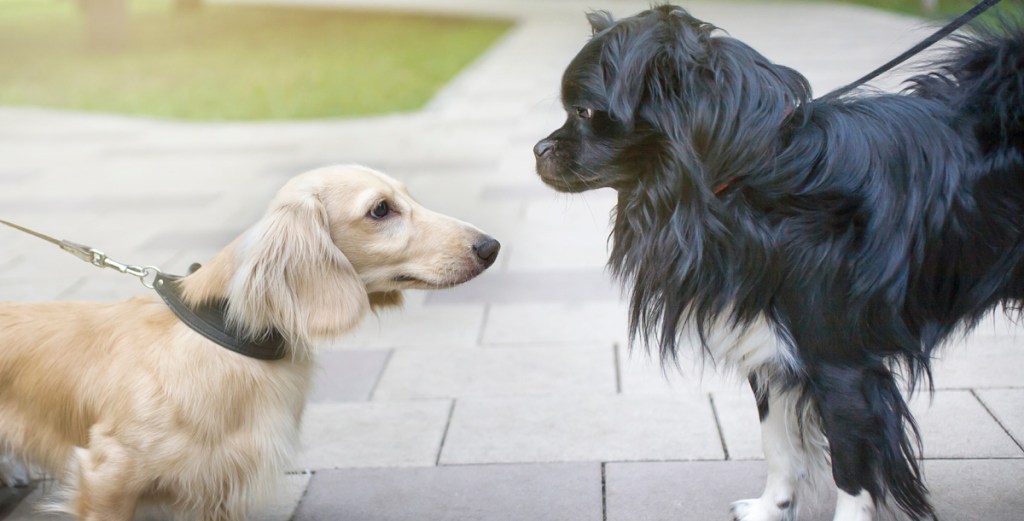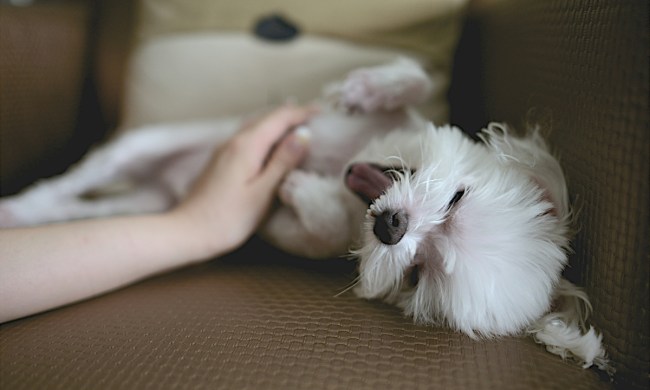If you’re considering getting a second dog — congratulations! Deciding when you’re ready to add four new paws to the family is a big step, and you’re not alone if you waited longer than you liked before getting your dog a friend. Some pet parents need to save up or move to a bigger home before they can adopt a dog, but this is a responsible thing to do in the long run. Even so, most of the work still lies ahead of you.
It can be another long process to find and adopt the right dog for you, but then you’ll need to learn how to get dogs to get along. It’s not exactly a straightforward or short process. There’s no one-size-fits-all approach to introducing two dogs, either, but these tips will always come in handy, no matter what step of the process you’re on. Take a deep breath (you’ve got this!) and keep reading to learn more.
1. Know what kind of dog you and your family are looking for

The first step to ensuring a successful introduction between two dogs happens long before they actually meet. You’ll want to think carefully and do your research when selecting the right dog to bring home because not every pup you meet will be a good match.
Of course, you can talk to animal shelter staff to find a dog that’s friendly with other pups, but it’s up to you to ensure you have the space, time, and resources to care for whichever dog you pick. You’ll want to consider what your future dog’s routines and activity levels will look like at home to make sure you select a dog breed that meshes well with your home, too.
2. Have two of everything on hand

Even if both your current dog and your new pup have shown no signs of resource guarding, it will make everyone’s life easier to have two of everything on hand. This will ensure that both dogs can drink if they’re thirsty at the same time and that they won’t be competing for their favorite bones and dog toys. This will help your dogs avoid any early disagreements, and it will prevent your current dog from feeling like their new roommate is taking food out of their mouths (literally and figuratively).
3. Leave your current dog at home when meeting your new furry friend

Even though it may sound smart to bring your furry friend with you while searching for a new sibling, it’s probably best to leave them at home when you initially meet. This will allow you to give 100% of your attention to the rescue dogs in front of you so you can make a huge decision: Which is the dog for you?
Bringing your current dog to an animal shelter could be chaotic for you, overwhelming for your dog, and triggering for any reactive pups in the shelter. If you’re ready to schedule a meet-and-greet with a new pup, the shelter workers will guide you through the process. Many require the entire family to meet a dog before taking them home, but there’s no single right way to set up these introductions.
4. Enlist the help of a second person for introductions

Speaking both logically and from experience, it can be next to impossible to handle an introduction between two dogs on your own. It’s always a smart idea to have both pups on a loosely held leash while meeting, but that can be so hard when you’re alone! This could add a lot of stress to the situation, which never helps.
Even if both dogs have perfectly clean histories, it’s also essential to have at least one person for every dog in the area in case of a fight. It’s better to be safe than sorry.
5. Introduce your dogs while on a walk in a neutral area

While most animal shelters conduct introductions in a fenced-in yard, it can be even better to walk the dogs side by side in a larger area like a park. This can feel a lot less tense and intimidating than meeting face to face in a small space, which they can interpret as a confrontation.
It’s also important to introduce dogs outside of the home or any spaces where your current dog may feel territorial. Once they’re interacting, or at least coexisting comfortably, you can move to your home.
6. Don’t force dogs to interact

It can be tough to know how to get dogs to get along, but the truth is that your dogs might be feeling just as clueless. Rescue dogs in their new homes may feel overwhelmed or exhausted after spending time in the shelter, so don’t force dogs to interact before they’re ready to. As long as neither dog is acting aggressively while walking side by side in a neutral place, you can still bring both dogs into your home.
7. Feed separately until they’re more comfortable

It may be annoying and time consuming to feed your dogs separately, but that can keep meal times low key and relaxing while everyone gets used to the new home dynamic. It can reduce opportunities for competition and resource guarding, which will keep things friendly and positive. You can start by feeding treats at the same time, then feeding them at opposite ends of the room, but some multi-dog households always have to feed their pups separately. Whatever works!
8. Supervise playtime at the beginning

The worst-case scenario is that you’ll need to stop two dogs from fighting, but this is likely to have a better outcome than if two dogs that don’t get along are left alone. This is why it’s so important to supervise playtime, especially during the first few weeks when dogs are still learning each other’s play styles and body language.
Most dogs figure this out on their own with a few barks and growls, but it’s always smart to stick around at first. A puppy that wants to play could mistakenly anger an older dog that’s sleepy or in pain, but you can redirect them both before they escalate their argument.
This may sound like a lot to consider – -and at first, it is — but with a little time and patience, your whole family will wonder how you ever lived without your newest furry friend. It will be worth the effort!




